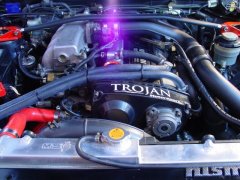Post Your Ideal Physique
Announcements
-
Similar Content
-
Latest Posts
-
Oh my god, I feel sick. So much second year uni formulas and crap in that for modelling a sprung and dampened system. Blergh!
-
I see a Toyota 86 that has been molested by an Audi (thinking R8 ish) and a Hyundai.
-
Hey Prank, Any chance you could easily lock all the old FS and WTB posts? Even if it's just a one off hit through there. The majority of posts are people asking someone if they still have something for sale from 8+ years ago, when the person who originally advertised it hasn't been on the site in donkeys years. Just a thought I had. Maybe go through and lock everything older than 12 months or something?
-
I'd be thinking it's the other way around. Less of an impact when rich compared to lean, but definitely in a lean condition the cat specifically uses up a lot more free oxygen. When rich it's grabbing oxygen from other places to like NOx, but it still gets converted to CO2 and H2O.
-
Sorry yeah - My post was a mess and I attempted to fix it. In my example both sensors are post-cat. I realized later that I had literally pulled the motor apart and we saw no evidence of any knock and everything was sweet, so my WB was likely accurate (enough!, if anything the engine looked a little rich) In your example I'd want to recalibrate both sensors. I realize this is not possible in the real world. Best you can do is: 1) Calibrate current sensor 2) Calibrate a brand new sensor in same location (do you have an older one to compare to? Or is this a new purchase) Observe any changes in readings. I always thought it was 1M, I am clearly out of date. Mine is likely 2m+. I didn't want to have to choose one bank over another in my application.
-









Recommended Posts
Create an account or sign in to comment
You need to be a member in order to leave a comment
Create an account
Sign up for a new account in our community. It's easy!
Register a new accountSign in
Already have an account? Sign in here.
Sign In Now